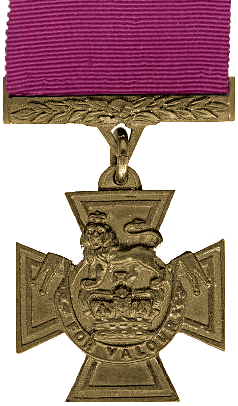Henry Reynolds (soldier) facts for kids
Quick facts for kids
Henry Reynolds
|
|
|---|---|
 |
|
| Born | 16 August 1883 Whilton, Northamptonshire |
| Died | 26 March 1948 (aged 64) Carshalton, Surrey |
| Buried |
St Giles' Churchyard, Ashtead
|
| Allegiance | |
| Service/ |
|
| Rank | Captain |
| Unit | The Royal Scots |
| Battles/wars | World War I |
| Awards | |
Henry Reynolds (born August 16, 1883 – died March 26, 1948) was a brave English soldier. He received the Victoria Cross (VC), which is the highest award for bravery in the face of the enemy. This special medal is given to soldiers from the British and Commonwealth forces.
Henry Reynolds was 38 years old during the First World War. He was a captain in the 12th Battalion of The Royal Scots (The Lothian Regiment). He earned his Victoria Cross for an amazing act of courage in 1917.
Captain Reynolds' Heroic Actions
On September 20, 1917, Captain Reynolds and his company were fighting near Frezenberg, Belgium. They were facing heavy fire from enemy machine-guns. The enemy also had a strong concrete bunker, called a "pill-box." This pill-box was causing many problems for his soldiers.
Captain Reynolds quickly got his men organized again. Then, he decided to go forward alone. He bravely rushed from one shell-hole to another, even though bullets were flying all around him. He got very close to the enemy pill-box.
When he was near, he threw a grenade. It should have gone inside, but the entrance was blocked. So, Captain Reynolds crawled right up to the entrance. He then forced a special grenade, called a phosphorus grenade, inside. This grenade set the pill-box on fire. Three enemy soldiers were killed, and the rest surrendered. Captain Reynolds captured two machine-guns from them.
Even though he was wounded, Captain Reynolds didn't stop there. He went on to capture another important enemy position. He took 70 prisoners and captured two more machine-guns. His actions showed incredible bravery and leadership.
The Victoria Cross Medal
Henry Reynolds' Victoria Cross is a very important medal. You can see it on display at the Royal Scots Museum. This museum is located inside Edinburgh Castle in Scotland.

